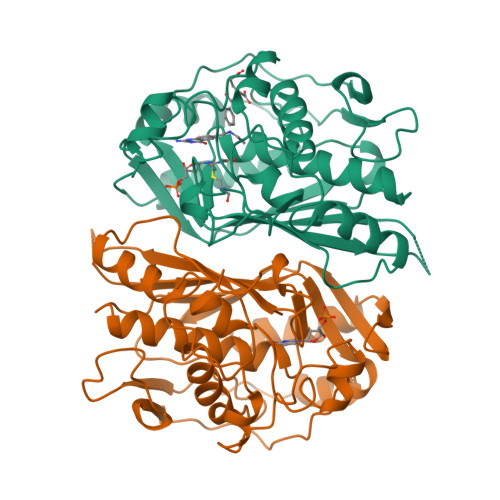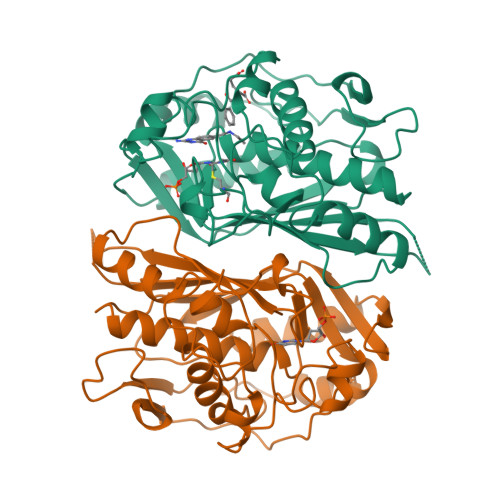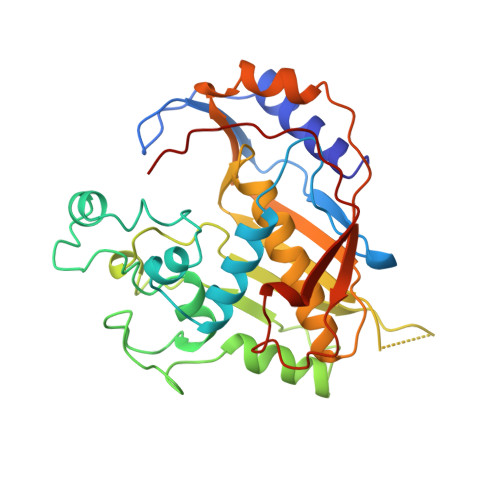The structural mechanism for half-the-sites reactivity in an enzyme, thymidylate synthase, involves a relay of changes between subunits.
Anderson, A.C., O'Neil, R.H., DeLano, W.L., Stroud, R.M.(1999) Biochemistry 38: 13829-13836
- PubMed: 10529228
- DOI: https://doi.org/10.1021/bi991610i
- Primary Citation of Related Structures:
1CI7 - PubMed Abstract:
Thymidylate synthase (TS), a half-the-sites reactive enzyme, catalyzes the final step in the de novo biosynthesis of deoxythymidine monophosphate, dTMP, required for DNA replication. The cocrystal structure of TS from Pneumocystis carinii (PcTS), a new drug target for an important pathogen, with its substrate, deoxyuridine monophosphate (dUMP), and a cofactor mimic, CB3717, was determined. The structure, solved at 2.6 A resolution, shows an asymmetric dimer with two molecules of the substrate dUMP bound yet only one molecule of cofactor analogue bound. The structural evidence reveals that upon binding cofactor analogue and forming a covalent bond from the nucleophilic cysteine to the substrate, dUMP, at one active site, PcTS undergoes a conformational change that renders the opposite monomer incapable of forming a covalent bond or binding a molecule of cofactor analogue. The communication pathway between the two active sites is evident, allowing a structural definition of the basis of half-the-sites reactivity for thymidylate synthase and providing an example of such a mechanism for other half-the-sites reactive enzymes.
Organizational Affiliation:
Macromolecular Structure Group, Department of Biochemistry and Biophysics, University of California at San Francisco 94143-0448, USA.




















